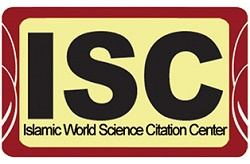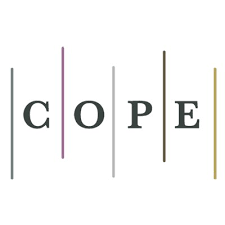Supply Chain Resilience in the Tobacco Industry in Honduras
DOI:
https://doi.org/10.52547/ijimes.2.3.103DOR:
https://dorl.net/dor/20.1001.1.27832678.2022.2.3.7.8Keywords:
Resilience, Supply Chain, Path Analysis, Tobacco Industry, Post Covid, WarAbstract
Purpose: The purpose of this article is to show the factors associated with the resilience of the supply chain in the tobacco industry and their influence on its performance.
Methodology: The methodology used was an exploratory, descriptive, correlational and explanatory type of study.
Findings: Through a path analysis, the integrated link between the theoretical model and the sample data was evaluated, and it was demonstrated how these data are anchored in the theoretical framework.
Originality/Value: The characterization of disruptions (positive or negative) in the performance of the supply chain, shows how they dynamically influence the ecosystem, the investments of the supply chain, interacting with each other and having effects to a greater or lesser extent; as is the case of the pandemic and the war between Russia and Ukraine in the Tobacco Industry and how it responds to such disruption, generating to what extent they affect these components and the strategies developed to address the risks.
Downloads
References
Macdonald, J. R., Zobel, C. W., Melnyk, S. A., & Griffis, S. E. (2018). Supply chain risk and resilience: theory building through structured experiments and simulation. International Journal of Production Research, 55(1-2). doi:DOI: 10.1080/00207543.2017.1421787
Melnyk, S. A., Closs, D. J., Griffis, S. E., Zobel, C. W., & McDonald, J. R. (2014). Understanding supply chain resilience. Supply Chain Management Review, 18(1), 34-41.
Bhamra, R., Dani, S., & Burnard, K. (2011). Resilience: the concept, a literature review and future directions. International Journal of Production Research, 49(18), 5375-5393. doi:https://doi.org/10.1080/00207543.2011.563826
Heckmann, I., Comes, T., & Nickel, S. (2015, Abril). A critical review on supply chain risk – Definition, measure and modeling. Omega, 52, 119-132. doi:https://doi.org/10.1016/j.omega.2014.10.004
Bustos R., A., Balbuena C., J. A., Zamora D, A. R., & Ascensio L., J. A. (2021). Resiliencia en el desempeño logístico ante eventos disruptivos de la cadena de suministro. Instrumentación de un marco conceptual. Publicación Técnica No. 612. Sanfandila, Qro.
Ballou, R. H. (2004). Logística. Administración de la cadena de suministro (5ta ed.). México: PEARSON EDUCACIÓN.
Aitken, J. (1998). Supply chain integration within the context of a supplier association: case studies of four supplier associations. Tesis, Cranfield University, School of Management. Retrieved from http://dspace.lib.cranfield.ac.uk/handle/1826/9990
Kamalahmadi, M., & Parast, M. M. (2016b). Developing a resilient supply chain through supplier flexibility and reliability assessment. International Journal of Production Research, 54(1), 302-321. doi:10.1080/00207543.2015.1088971
Jüttner, U., Peck, H., & Martin, C. (2003). Supply chain risk management: outlining an agenda for future research. International Journal of Logistics Research and Applications, 6(4), 197-210. doi:10.1080/13675560310001627016
Sáenz, M. J., & Revilla, E. (2014). Creatin More Resilient Supply Chains. MIT Sloan Management Review. Retrieved from https://www.researchgate.net/profile/Maria-Saenz-11/publication/264037785_Creating_More_Resilient_Supply_Chains/links/0a85e53c925ca08eb9000000/Creating-More-Resilient-Supply-Chains.pdf
Fiksel, J., Polyviou , M., Croxton, K. L., & Pettit, T. J. (2015). From risk to resilience: Learning to deal with disruption. MIT Sloan Management Review, 56(2), 79-86.
Christopher, M. (2011). Logistics & Supply Chain Management (4ta ed.). Harlow, Essex, Inglaterra: Financial Times/Prentice Hall.
Cranfield School of Management. (2002). Supply Chain Vulnerability, report on behalf of DTLR, DTI and Home Office. Cranfield University.
Vargas Florez, J., González Álvarez, D., & Cornejo Sánchez, C. (2015). Medición de la resiliencia en la cadena de suministros, en una nueva teoria del negocio. 13th Latin American and Caribbean Conference for Engineering and Technology: Engineering Education Facing the Grand Challenges, What Are We Doing? Refereed Paper #74. Santo Domingo: República Dominicana. doi:http://dx.doi.org/10.18687/LACCEI2015.1.1.074
Riquelme Oyarzún, B. (2021, 06 30). Atención con la resiliencia en la cadena de suministros. Revista de Marina, 138(982). Retrieved 2022, from https://revistamarina.cl/es/articulo/atencion-con-la-resiliencia-en-la-cadena-de-suministros
Cotte Urrutia, A. M. (2018). Cadena de Suministros Resiliente. Bogotá, Colombia. Retrieved from https://repository.unimilitar.edu.co/bitstream/handle/10654/17746/CotteUrrutiaAnaMar%C3%ADa%202018.pdf?sequence=2&isAllowed=y
Kamalahmadi, M., & Parast, M. M. (2016a). A review of the literature on the principles of enterprise and supply chain resilience: Major findings and directions for future research. International Journal of Production Economics, 171, 116-133. doi:https://doi.org/10.1016/j.ijpe.2015.10.023
Handfield, R. B., Graham , G., & Burns, L. (2020). Corona virus, tariffs, trade wars and supply chain evolutionary design. International Journal of Operations & Production Management, 40(10), 1649-1660. doi:https://doi.org/10.1108/IJOPM-03-2020-0171
Kim, Y., Chen, Y.-S., & Linderman, K. (2015). Supply network disruption and resilience: A network structural perspective. Journal of Operations Management, 33-34, 43-59. doi: https://doi.org/10.1016/j.jom.2014.10.006
Kwak, D. -W., Seo, Y. -J., & Mason , R. (2018). Investigating the relationship between supply chain innovation, risk management capabilities and competitive advantage in global supply chains. International Journal of Operations & Production Management, 38(1), 2-21. doi:https://doi.org/10.1108/IJOPM-06-2015-0390
Brindley, C. (2017). Supply Chain Risk (1era ed.). London: Routledge. doi:https://doi.org/10.4324/9781315242057
Aven, T. (2016, Marzo 31). Risk assessment and risk management: review of recent advances on their foundations. European Journal of Operational Research, 253, 1-13. doi:https://doi.org/10.1016/j.ejor.2015.12.023
Scholten, K., Stevenson, M., & van Donk, D. P. (2020). Dealing with the unpredictable:supply chain resilience. International Journal of Operations & Production Management, 40(1), 1-10. doi: https://doi.org/10.1108/IJOPM-01-2020-789
Kahiluoto, H., Kaseva, J., Hakala , K., Himanen, S. J., Jauhiainen, L., Rötter , R. P., . . . Trnka , M. (2014, Marzo). Cultivating resilience by empirically revealing response diversity. Global Environmental Change, 25, 186-193. doi:https://doi.org/10.1016/j.gloenvcha.2014.02.002
Van der Vegt, G. S., Essens, P., Wahlström, M., & George, G. (2015). Managing risk and resilience: from the editors. Academy of Management Journal, 58(4), 971-980. doi:https://doi.org/10.5465/amj.2015.4004
Choi, T. Y., & Krause, D. R. (2006). The supply base and its complexity: implications for transaction costs,risks, responsiveness, and innovation. Journal of Operations Management, 24, 637-652. doi:https://doi.org/10.1016/j.jom.2005.07.002 .
Ateş, M. A., Wynstra, F., & van Raaij, E. M. (2015). An exploratory analysis of the relationship between purchase category strategies and supply base structure. Journal of Purchasing and Supply Management, 21(3), 204-219. doi:https://doi.org/10.1016/j.pursup.2015.04.007
Kahiluoto , H., Mäkinen , H., & Kaseva , J. (2020). Supplying resilience through assessing diversity of responses to disruption. International Journal of Operations and Production Management, 40(3), 271-292. doi:http://dx.doi.org/10.1108/IJOPM-01-2019-0006
Scholten , K., & Schilder, S. (2015). The role of collaboration in supply chain resilience. Supply Chain Management , 20(4), 471-484. doi: https://doi.org/10.1108/SCM-11-2014-0386
Blackhurst, J., Dunn , K. S., & Craighead, C. W. (2011). An Empirically Derived Framework of Global Supply Resiliency. Journal of Business Logistics, 32, 374-391. doi:https://doi.org/10.1111/j.0000-0000.2011.01032.x
Jüttner, U., & Maklan , S. (2011). Supply chain resilience in the global financial crisis: an empirical study. Supply Chain Management, 16(4), 246-259. doi:https://doi.org/10.1108/13598541111139062
Tukamuhabwa, B. R., Stevenson, M., Busby , J., & Zorzini, M. (2015). Supply chain resilience: definition, review and theoretical foundations for further study. International Journal of Production Research, 53(18), 5592-5623. doi:10.1080/00207543.2015.1037934
Ribeiro, J. P., & Barbosa‐Póvoa, A. (2018). Supply Chain Resilience: Definitions and quantitative modelling approaches - A literature review. Computers and Industrial Engineering, 115, 109-122. doi:10.1016/j.cie.2017.11.006
Carvalho, H., Azevedo , S. G., & Cruz-Machado, V. (2012). Agile and resilient approaches to supply chain management: influence on performance and competitiveness. Logistics Research, 4, 49–62. doi:https://doi.org/10.1007/s12159-012-0064-2
Knemeyer, A. M., Zinn, W., & Eroglu, C. (2009). Proactive planning for catastrophic events in supply chains. Journal of Operations Management, 27, 141-153. doi:https://doi.org/10.1016/j.jom.2008.06.002
Tarigan, Z., Siagian, H., & Jie, F. (2021). Impact of Internal Integration, Supply Chain Partnership,. Sustainability 2021, 13, 5460, 18. doi:https://doi.org/10.3390/su13105460
Sayol, I. (2021). Ignasi Sayol. Retrieved from https://ignasisayol.com/es/resiliencia-cadena-suministro/
Orbit Logistics. (2021, Junio 02). Orbit Log. Retrieved from https://blog.portalvmi.com.br/es/a-importancia-de-uma-cadeia-de-suprimentos-resiliente/
Alicke, K., & Peters, S. (2021, Diciembre 18). Resiliencia de la cadena de suministro: ¿Un Santo Grial? (D. Luchtenberg, Interviewer) Retrieved from https://www.mckinsey.com/business-functions/operations/our-insights/supply-chain-resilience-is-there-a-holy-grail/es-ES
Estudio Capgemini. (2020). Construyendo resiliencia en la cadena de suministro: Incrementar la resiliencia de la cadena de suministro constituye una prioridad para dos tercios de las empresas tras la disrupción provocada por la COVID-19. Instituto de Investigación de Capgemini. Retrieved from https://www.capgemini.com/es-es/wp-content/uploads/sites/16/2020/11/NP_Supply-Chain-Resilience_Capgemini_1120.pdf
Sánchez Salas, J. (2020, Mayo). Una cadena de suministro resiliente. T21. Retrieved from http://t21.com.mx/opinion/columna-invitada/2020/05/06/cadena-suministro-resiliente
Cartier, J. (2020). Latin America Shows Supply Chain Resilience In A Time Of Disruption. Forbes. Retrieved from https://www.forbes.com/sites/sap/2020/07/30/latin-america-shows-supply-chain-resilience-in-a-time-of-disruption/?sh=64691ae34642
Belchi, A. (2022, Marzo 14). Los efectos y las consecuencias de la guerra en Ucrania. La voz de América. Retrieved from https://www.vozdeamerica.com/a/efectos-consecuencias-guerra-ucrania-/6484777.html
Econometría Consultores. (2022, Marzo 11). Implicaciones de la guerra Rusia - Ucrania. La República. Retrieved Abril 2022, from https://www.larepublica.co/analisis/econometria-consultores-2889073/implicaciones-de-la-guerra-rusia---ucrania-3320192
Travaglino, D. (2022, Marzo 04). UCC. Retrieved from Universidad Católica de Cordoba: https://icda.ucc.edu.ar/noticias/impacto-en-la-cadena-de-abastecimiento-global-por-la-guerra-rusia-ucrania-y-su-impacto-en-argentina
Gutiérrez, W. (2022). 6 consecuencias del conflicto bélico entre Rusia y Ucrania. Retrieved from Tecnológico de Monterrey - Conecta: https://tec.mx/es/noticias/santa-fe/educacion/6-consecuencias-del-conflicto-belico-entre-rusia-y-ucrania
Nicas, J. (2022, Marzo 23). La guerra en Ucrania podría desencadenar una crisis mundial de alimentos. The New York Times. Retrieved from https://www.nytimes.com/es/2022/03/23/espanol/ucrania-guerra-alimentos-precios.html
Martel, I. (2022, Marzo 11). Las consecuencias de la guerra entre Ucrania y Rusia. ABC Internacional. Retrieved from https://www.abc.es/internacional/abci-consecuencias-guerra-ucrania-rusia-nsv-202203101732_noticia.html?ref=https%3A%2F%2Fwww.abc.es%2Finternacional%2Fabci-consecuencias-guerra-ucrania-rusia-nsv-202203101732_noticia.html
Barría, C. (2022, Marzo 15). Rusia y Ucrania: qué efectos puede tener la invasión rusa en las economías de América Latina. BBC News Mundo. Retrieved from https://www.bbc.com/mundo/noticias-60741690
Liberatore, F., Scaparra, M. P., & Daskin, M. S. (2012). Hedging against disruptions with ripple effects in location analysis. Omega, 40(1), 21-30. doi:https://doi.org/10.1016/j.omega.2011.03.003
Ivanov, D. (2017). Simulation-based Ripple Effect Modelling in the Supply Chain. International Journal of Production Research, 55(7), 2083-2101. doi:https://doi.org/10.1080/00207543.2016.1275873
Hernández Sampieri, R., Fernández Collado, C., & Baptista Lucio, P. (2014). Metodología de la investigación (6ta ed.). México D.F: McGRAW-HILL.
Sullivan, L. E., Johnson, R. B., Mercado, C. C., & Terry, K. J. (2009). The Sage Glossary of the Social and Behavioral Sciences. Sage Publications, Inc. doi: https://doi.org/10.4135/9781412972024
Ortiz Pulido, R. (2000, Octubre). Análisis de rutas en biología: estadística para sistemas multicausales. Interciencia, 25(7), 329-336. Retrieved from https://www.redalyc.org/articulo.oa?id=33904903
Pérez, E., Medrano , L. A., & Sánchez Rosas, J. (2013, Abril). El Path Analysis: conceptos básicos y ejemplos de aplicación. Revista Argentina de Ciencias del Comportamiento, 5(1), 52-66. Retrieved from https://www.redalyc.org/articulo.oa?id=333427385008
Kline, R. B. (2016). Principles and practice of structural equation modelling. 4ta ed. The Guilford Press, New York. Retrieved from https://www.mendeley.com/catalogue/23c7b638-9c77-3929-ae9e-f9f6386642c3/?utm_source=desktop&utm_medium=1.19.4&utm_campaign=open_catalog&userDocumentId=%7Be49700e6-8ed4-4ffc-9eed-c7c0692ecaf7%7D
Frías-Navarro, D. (2022). Apuntes de estimación de la fiabilidad de consistencia interna de los ítems de un instrumento de medida. In D. Frías-Navarro, Recomendaciones para redactar el informe de investigación y lectura crítica. España: Universidad de Valencia. Retrieved from https://www.uv.es/friasnav/AlfaCronbach.pdf
Morales Vallejo, P. (2008). Estadística aplicada a las ciencias sociales. In P. Morales Vallejo, & U. P. Comillas (Ed.), Estadística aplicada a las ciencias sociales (pp. 187-236). Madrid, España.
Kline, R. B. (1998). Principles and practice of structural equation modeling. Guilford Press. Guilford Press.
Kline, R. B. (2005). Principles and practice of structural equation modeling. 2nd ed. Guilford Press.
Hu, L.-t., & Bentler, P. M. (1998). Fit indices in covariance structure modeling: Sensitivity to underparameterized model misspecification. Psychological Methods, 3(4), 424–453. doi:https://doi.org/10.1037/1082-989X.3.4.424
MacCallum, R. C., Browne, M. W., & Sugawara, H. M. (1996). Power Analysis and Determination of Sample Size for Covariance Structure Modeling. Psychological Methods, 1(2), 130-49.
Published
How to Cite
Issue
Section
License
Copyright (c) 2022 Ramón Armando Varela Zuniga

This work is licensed under a Creative Commons Attribution 4.0 International License.












